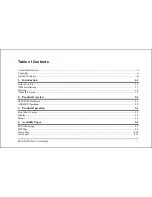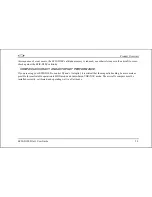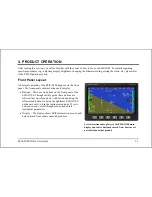
Product Overview
2-2
EFIS-D100 Pilot’s User Guide
SENSORS AND INPUTS
Attitude information is obtained from 3 solid-state gyrometers, 3 solid-state accelerometers, and the airspeed pressure
sensor. Heading information is obtained from 3 solid-state magnetometers housed in the EDC-D10A. Airspeed, altitude
and angle of attack are obtained from three separate pressure transducers.
HSI information can be displayed when connected to Dynon’s HS34, a Garmin SL30, or a compatible GPS unit.
DYNON SMART AVIONICS BUS
If you have multiple Dynon Avionics products in your aircraft, they may be networked together via the Dynon Smart
Avionics Bus (DSAB). Units networked via DSAB have the ability to transmit information to each other. Any product's
data can then be viewed on any other screen in the DSAB network. For example, an EFIS has the ability to display
engine monitor information if it is connected to an EMS or FlightDEK-D180.
Note that the failure of a unit in a DSAB network may cause the loss of some or all data shared between units. In the
above example, if the connected EMS/FlightDEK-D180 were to fail, the EFIS would no longer be able to behave as an
engine monitor. For more information on DSAB-specific alerts, refer to the DSAB Alerts section on page 8-3.
OUTPUTS
The EFIS-D100 has an output to drive an external customer-supplied audible device for AOA (if installed) and altitude
alerts.
A serial output is also provided for serial altitude encoder data. An optional Serial-to-Gray Code Converter is available
for connection to Mode C Gray Code transponders.
A connected HS34 or AP74 can output voice annunciations for many of the alerts generated by the EFIS-D100.

































